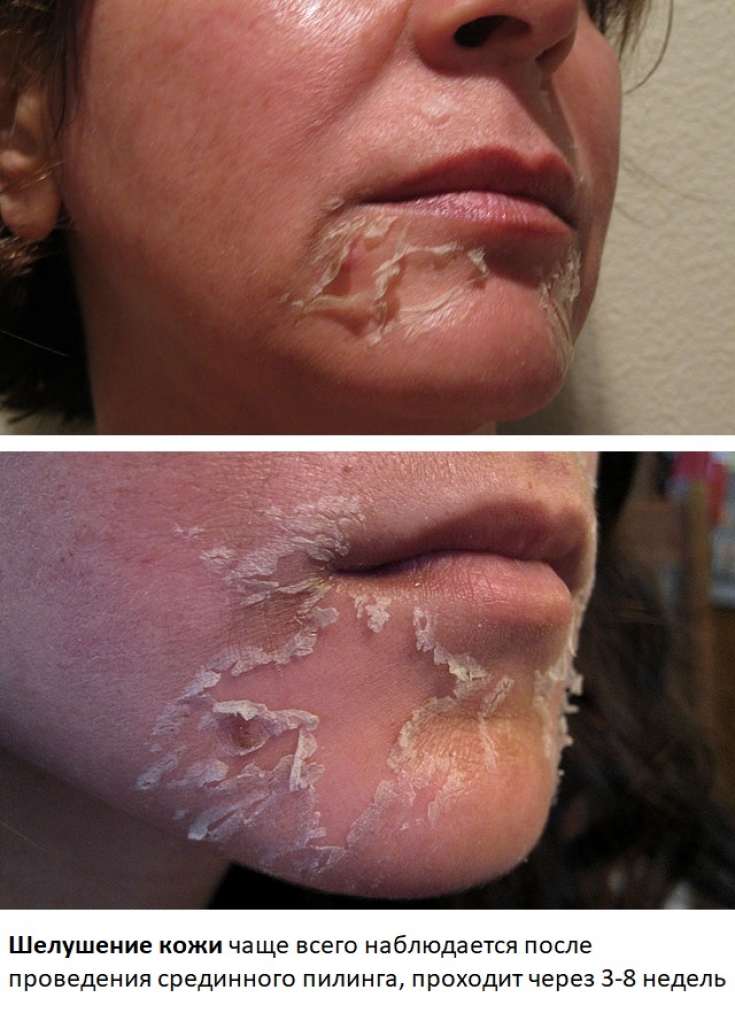– quite simple, but quite effective cosmetic procedure. Indications for chemical peeling are dyschromia, acne, lentigo, seborrheic keratomas, superficial scars. However, the development of complications after a chemical peel procedure is not uncommon.
In this article on estet-portal.com, we will look at the most common temporary and permanent
complications after the procedureof a chemical peel for the face, the possible causes of development, as well as the principles of their prevention. Chemical peeling for the face: possible causes of complications
There are several groups of causes that can lead to the development of complications after a chemical facial peel.
Among them should be highlighted:1.
Individual features of the patient's skin: for example, if the patient is prone to the formation of keloid scars, there is a high risk of developing hypertrophic processes; 2.
Hormonal disorders in the patient's body: women with hormonal imbalances have a high risk of developing hyperpigmentations; 3.
Using hormonal drugs: the patient taking combined oral contraceptives in parallel with peeling increases the risk of hyperpigmentation; 4.
Bad habits: Skin recovery after a chemical peel procedure in smokers is worse than in non-smokers. In some cases, smoking may be the background for pathological scarring of the skin; 5.
Violation of the technologyof peeling by a doctor. For more information about the possible complications of using a chemical peel for the face, read further in the article.
Follow us onTelegram Chemical Facial Peel: Temporary complications after the procedure
All complications that occur after the procedure of chemical peeling for the face can be divided into two groups: temporary and persistent.
Temporary complications of chemical peeling for the face: erythema, peeling of the skin, exacerbation of chronic dermatoses, infections.
Temporary complications after a facial chemical peel include:
1.
Erythema- after a superficial chemical peel for the face, it is observed within a few minutes-days, after the median – up to four weeks, deep – up to three months or more. In some cases, especially if the rules of post-peeling management of the patient are violated, even the formation of persistent erythema is possible; 2.
Skin peelingis most often observed after a medium peel and completely disappears after 3-8 weeks; 3.
Exacerbation of chronic dermatosesmay occur in the first days after the procedure (acne, seborrheic dermatitis, rosacea); 4.
Infectious complicationsof chemical peeling for the face: staphylococcal, streptococcal, herpetic infections. In most cases, the above complications are well corrected and pass without a trace.
Read also:
Acid for the skin: features of a median peeling for the face Dyschromia as a complication of facial chemical peel
Persistent complications after a facial chemical peel procedure include the development of dyschromia, demarcation line, telangiectasias, and scarring.
Dyschromias include both depigmentation and hyperpigmentation.

Hyperpigmentation can occur as a result of peeling, which affects the layers of the skin located below the stratum corneum. It is the result of increased sensitivity to ultraviolet radiation, as well as the activation of melanocytes in response to injury and the subsequent inflammatory response of the skin.
You may also be interested in:
Possibilities of cosmetics in the prevention of early skin aging Other complications after chemical peeling
The formation of a demarcation line implies the development of a clear boundary between the skin that has been peeled and the intact skin.
Scarring is one of the most difficult to correct complications after a chemical peel procedure for the face. Most often, scars develop as a result of a violation of the peeling technology by the doctor himself, with the forcible removal of the scab, after deep post-peeling acne rashes.
Principles for preventing complications from facial chemical peels include:1. Carrying out the procedure of chemical peeling for the face strictly according to indications;
2. Compliance with peeling technology at all stages of the procedure;
3. Compliance with the rules of asepsis in the beauty parlor;
4. Correct post-peel rehabilitation, providing conditions for a more favorable course of the skin recovery period.
Thus, we can draw the following conclusion: despite the fact that complications after the chemical peeling procedure are quite common, most of them can be avoided by strict adherence to the peeling technology and asepsis rules in the office.
Compliance with the rules of asepsis in the beauty parlor, strict adherence to the peeling technology, as well as competent management of the post-peeling period can prevent the development of most complications after the procedure.
Thank you for staying with estet-portal.com. Read other interesting articles in the "Cosmetology" section. You may also be interested in:
How to speed up recovery after peels and traumatic cleansings.






